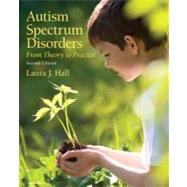
Chapter One
Classification and the Physiological Approach
Assessment
Addition Measures Used To Assess Outcomes
Collaborating for Effective Implementation of Evidence-Based Practices
Legislation Guiding Practice
Identifying Evidence-Based Practices
Implementing Evidence-Based Practices Effectively
CEC Code of Ethics for Educators of Persons with Exceptionalities
Implementing A Systems Approach
The Who, When, Where, What and Why of Effective Systems
Working Effectively With Paraprofessionals
Working Collaboratively With Families
Recomendations To and By Parents Regarding Evidence-Based Practices
Maintaining and Sustaining Effective Practice
Evolution of Facilitated Communication: A Strategy Without Evidence of Support
Selecting Evidence-Based and "New" Strategies
Applied Behavior Analysis: Increasing Skills
Ethical Applications
Applied Behavior Analysis: Replacing Behavior
Observation and Measurement
Self-Management
Token Economies
Combinations of Strategies
Key Concepts Put Into Practice
Research Using Applied Behavior Analysis to Decrease and Replace Behaviors
Developmental and Social-Relational Approaches
The DIR/Floor Time Approach
The Hanen Program
Enhanced Milieu Teaching
Project Impact
Cultural Approaches
Focus on Communication
Enhancing Educator Skills as Communication Partners
Building Social Skills and Social Relationships
Teaching Social and Play Skills With Young Peers
Love and Marriage?
Issues and Research Questions
Transition to Adulthood
Legislation guiding Practice
Best Practice in Developing the Individualized Trasition Plan (ITP)
Research on Best Practices for Adults With ASD
Implementing Evidence-Based Practices
Preparing For Post School Outcomes
Adult Services and Supports
Advocating for Policy Change
Call for Optimism and Action in the Creation of Communities of Practice
The New copy of this book will include any supplemental materials advertised. Please check the title of the book to determine if it should include any access cards, study guides, lab manuals, CDs, etc.
The Used, Rental and eBook copies of this book are not guaranteed to include any supplemental materials. Typically, only the book itself is included. This is true even if the title states it includes any access cards, study guides, lab manuals, CDs, etc.